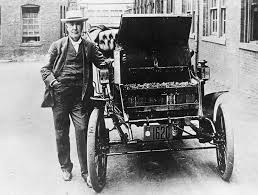Electric vehicles (EVs) have surged in popularity in recent years, but their origins trace back more than a century. The journey of electric vehicle history is filled with remarkable innovators who laid the foundation for today’s sustainable transportation. Long before Tesla and other modern EV brands, early pioneers experimented with battery-powered transportation, setting the stage for the vehicles we see today.
The Birth of Electric Mobility
The concept of electric-powered transport dates back to the early 19th century. Scottish inventor Robert Anderson is often credited with creating the first crude electric vehicle in the 1830s. His carriage, powered by non-rechargeable batteries, was a rudimentary but groundbreaking step toward electrified transportation. However, the real advancement in electric vehicle history began in the 1850s when French physicist Gaston Planté invented the rechargeable lead-acid battery. This crucial development allowed electric vehicles to become more practical, paving the way for future innovations.
By the late 1800s, inventors across Europe and the United States were developing their own versions of electric carriages. Notable contributors like Thomas Davenport and Ányos Jedlik explored early electric propulsion, while chemist Camille Alphonse Faure improved battery technology, extending EV range and efficiency. These advancements set the stage for commercial electric cars in the early 20th century.
The Rise of Electric Vehicles in the Early 1900s
The early 20th century saw a golden age for electric cars. Unlike their gasoline-powered counterparts, early electric vehicles were quieter, easier to operate, and did not produce unpleasant emissions. As a result, they gained popularity, especially among wealthy urban dwellers.
In 1897, the first fleet of electric taxis was introduced in New York City by the Electric Carriage and Wagon Company. These vehicles, known as “Electrobats,” demonstrated the potential of electric transportation for public use. Around the same time, automobile manufacturers such as Baker Electric, Detroit Electric, and Columbia Electric Car Company produced battery-powered cars catering to affluent consumers.
One of the most successful electric vehicles of this era was the Detroit Electric, produced by the Anderson Electric Car Company. The vehicle became a favorite among wealthy individuals, including Henry Ford’s wife, Clara Ford, who preferred it over gasoline-powered cars due to its ease of use and reliability. At its peak, the Detroit Electric had an impressive range of up to 80 miles per charge, making it one of the most advanced EVs of its time.
The Decline of Early Electric Cars
Despite their initial success, early electric cars faced significant challenges as the 20th century progressed. The discovery of vast petroleum reserves led to the mass production of gasoline-powered vehicles, making them more affordable and accessible to the general public.
The introduction of the electric starter in 1912, invented by Charles Kettering, eliminated the need for hand cranking, making gasoline cars more convenient. Additionally, advancements in internal combustion engine technology allowed gasoline vehicles to travel longer distances, further reducing the appeal of electric cars. By the 1930s, electric vehicles had largely disappeared from mainstream markets, overshadowed by the rise of Ford’s mass-produced Model T and other gasoline-powered automobiles.
Revival Attempts and Technological Advancements

Although electric cars faded into obscurity for several decades, efforts to revive them continued. During the 1960s and 1970s, concerns over air pollution and fuel shortages prompted renewed interest in electric vehicle history. Automakers and researchers experimented with battery technologies, but limited range and high costs prevented widespread adoption.
In the 1990s, California’s Zero Emission Vehicle (ZEV) mandate encouraged automakers to develop electric cars once again. This era saw the launch of vehicles like the General Motors EV1, a fully electric car with impressive performance. However, due to limited infrastructure and resistance from the oil and automotive industries, the EV1 and similar vehicles were discontinued, delaying widespread electric car adoption.
The Modern Electric Vehicle Revolution
The 21st century has seen an undeniable resurgence in electric vehicles, thanks to breakthroughs in battery technology, government incentives, and growing environmental awareness. Lithium-ion batteries, which offer higher energy density and a longer lifespan, have significantly improved EV performance. Companies like Tesla, Nissan, and Chevrolet have played a crucial role in popularizing electric vehicles worldwide.
Tesla’s introduction of the Roadster in 2008 and subsequent models like the Model S, Model 3, and Model Y have demonstrated that electric vehicles can be powerful, stylish, and capable of long-range travel. Meanwhile, legacy automakers such as Ford, Volkswagen, and General Motors have accelerated their transition to electric mobility, introducing a variety of EV models to cater to different market segments.
The Future of Electric Vehicles
With advancements in battery technology, expanding charging infrastructure, and increasing governmental support, the future of electric vehicles looks promising. Companies are investing heavily in solid-state batteries, which promise greater efficiency and faster charging times. Additionally, emerging markets in Asia, Europe, and North America are seeing a rapid expansion of electric vehicle adoption.
As autonomous driving technology merges with electric mobility, the next generation of vehicles is expected to be more efficient, sustainable, and accessible. The innovations that began with early electric vehicle pioneers continue to shape the automotive industry, proving that electric cars are not just a passing trend but the future of transportation.
Conclusion
The evolution of electric vehicles is a testament to human ingenuity and the persistent drive for innovation. From the early experiments of the 19th century to the cutting-edge advancements of today, electric vehicle history reflects a journey of breakthroughs, setbacks, and ultimately, progress. As the world shifts toward cleaner energy and sustainable transportation, the vision of early electric car pioneers lives on, inspiring a new era of mobility that is both efficient and environmentally friendly.
